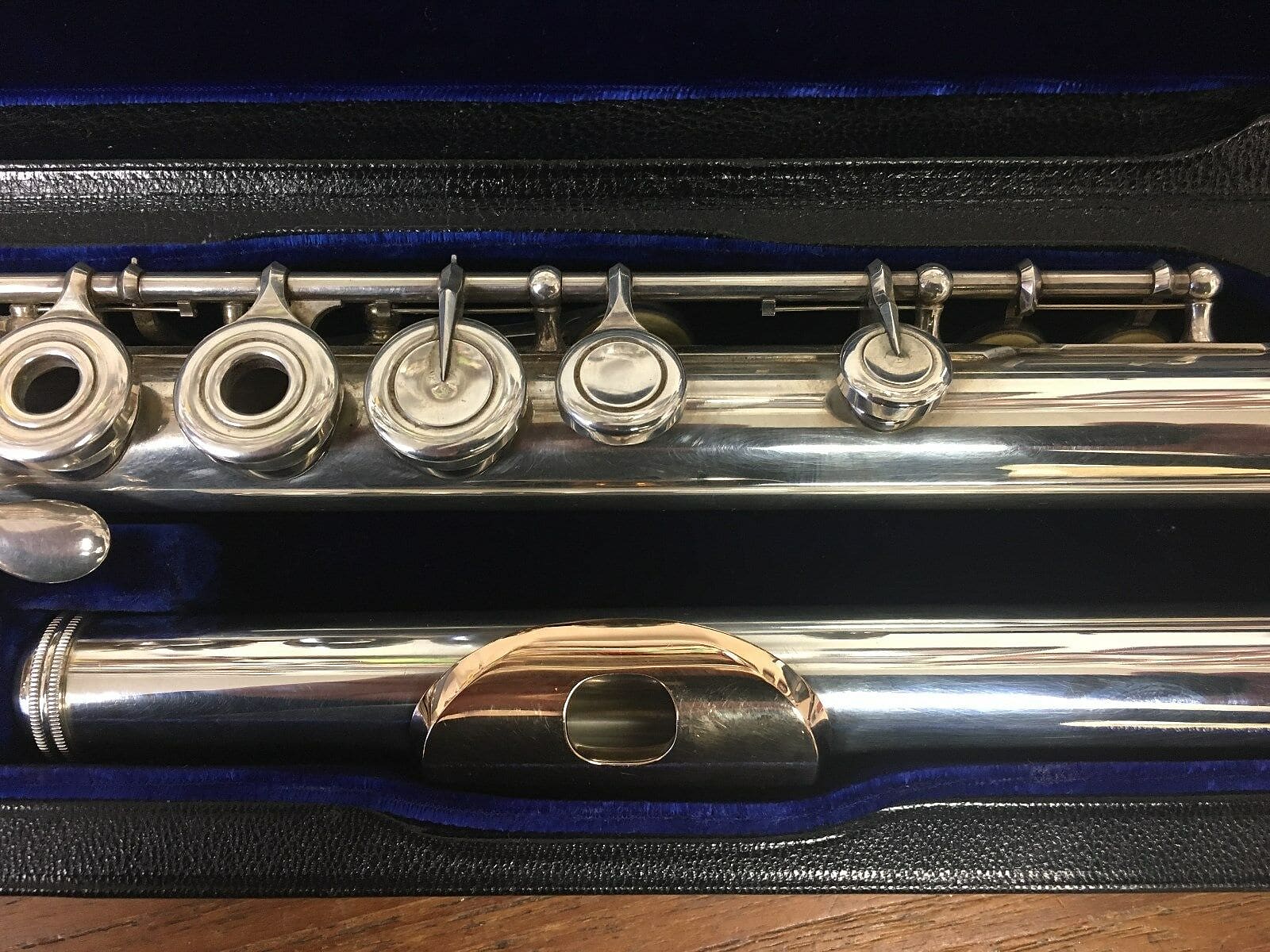 |
In 1965, Powell built only 114 flutes, half of them “commercials” and half “hand-made”. That means this particular instrument is rare and of the absolute highest quality. In 1965, before Muramatsu, Sankyo and the others were producing pro-quality instruments, virtually ALL the world’s professional and concert artists performed on either a Powell or a Haynes hand-made. Notes about names... Louis Lot, the "Stradivarius of flute makers" sold his workshop in 1876, retired to the countryside. The shop was sold to his most-trusted worker, H. D. Villette. Villette sold to Deboneetbeau in 1882, and so on. Which means that some players / collectors are now referring to Lot workshop owners as "first generation", "second generation", "third generation" and so on. It's our opinion that this nomenclature makes sense. Flutes made by Verne Powell himself are superb, equal to (or better than) the best of the "old French". Today's Powell flutes are of all prices and quality, from basic student models to the finest in modern production. But Powell is now owned by a French conglomerate that includes workshops that produce clarinets, saxophones, tubas and the rest. Which means, in our opinion, that we prefer to refer to flutes made when Verne owned the company as "first generation Powell"; Flutes from the four master-craftsmen who bought the shop, we've named "second generation". Not sure what the call instruments from the Wasser years....perhaps "Wasser generation Powells".
|
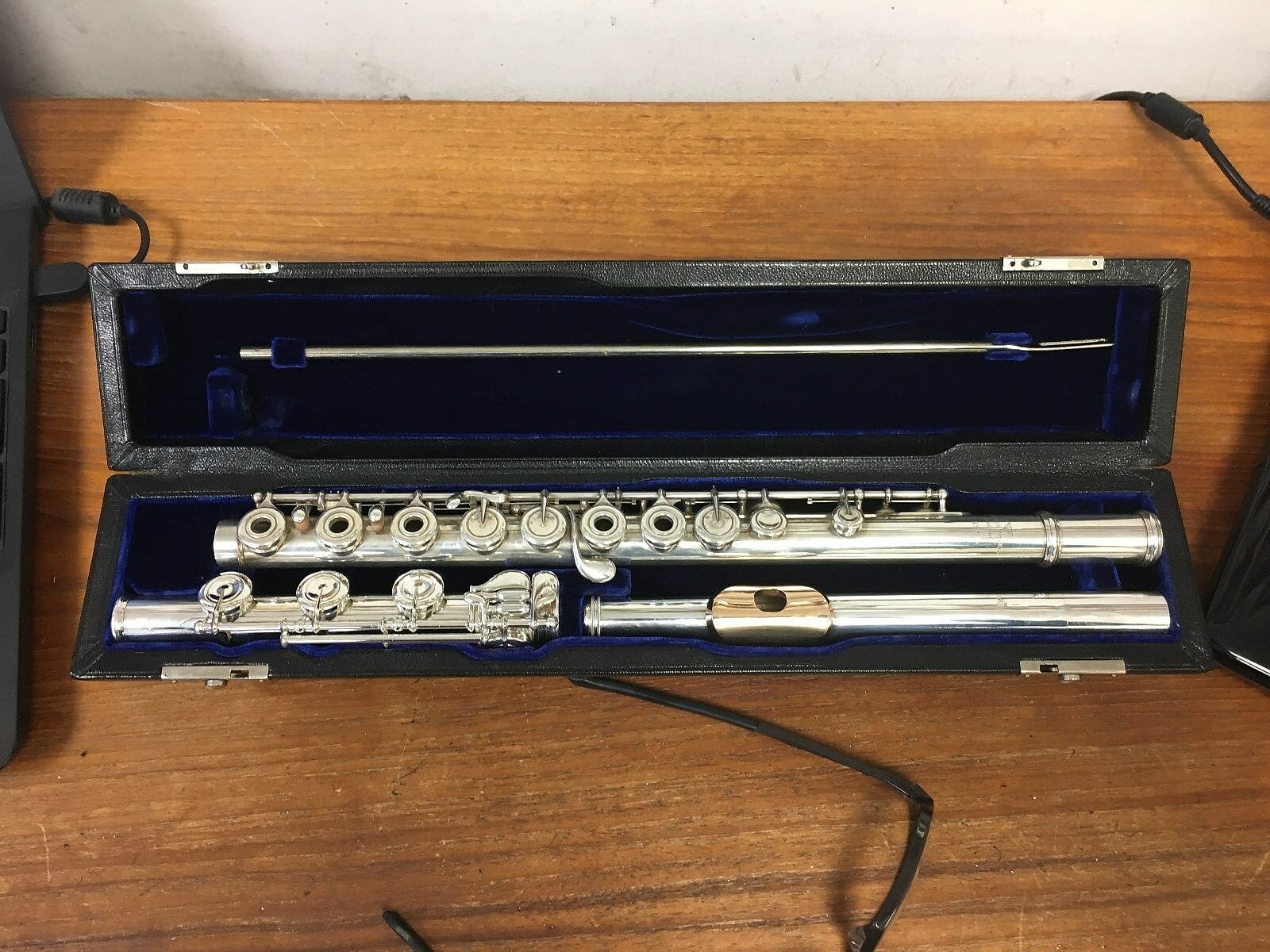
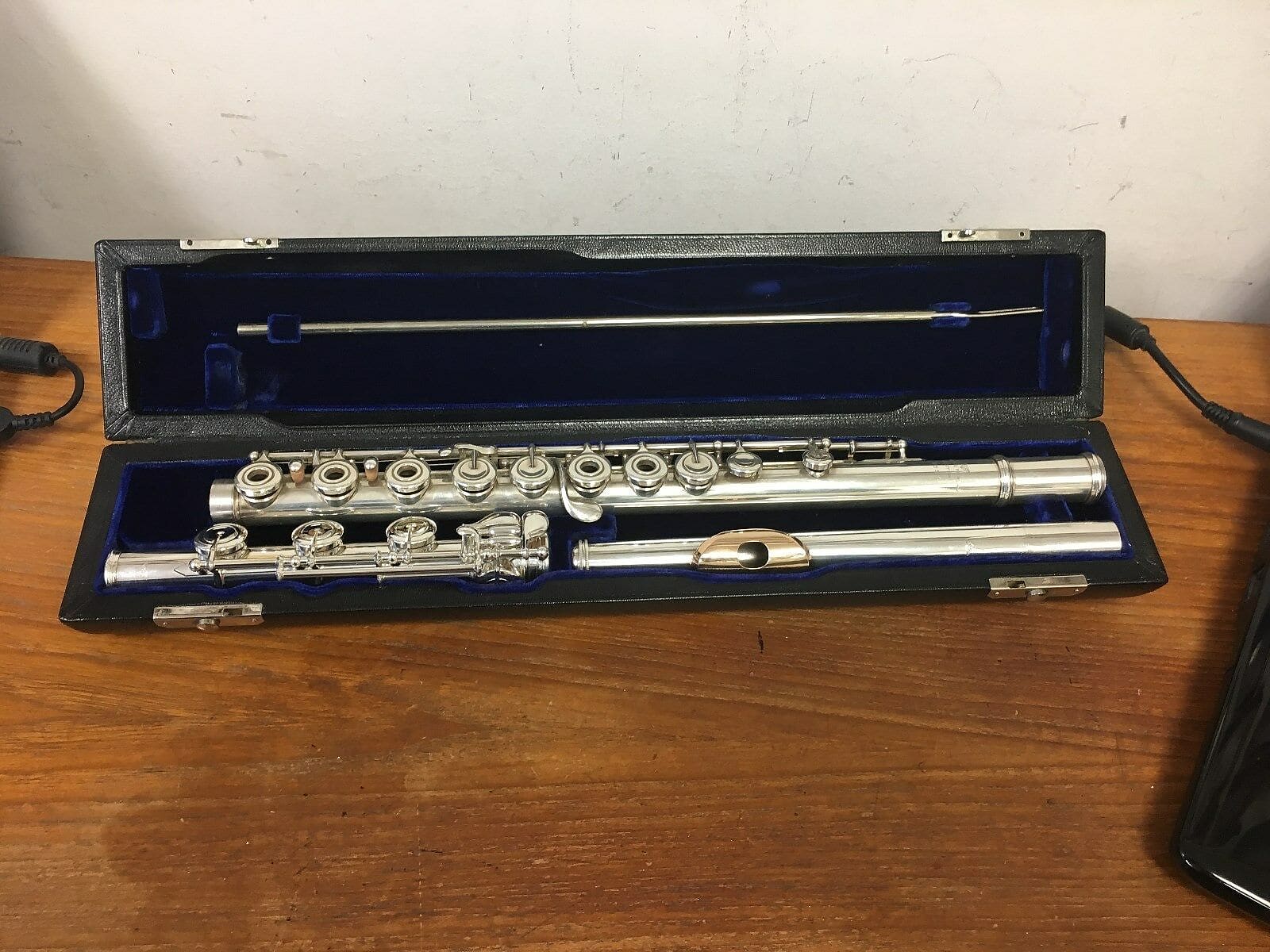


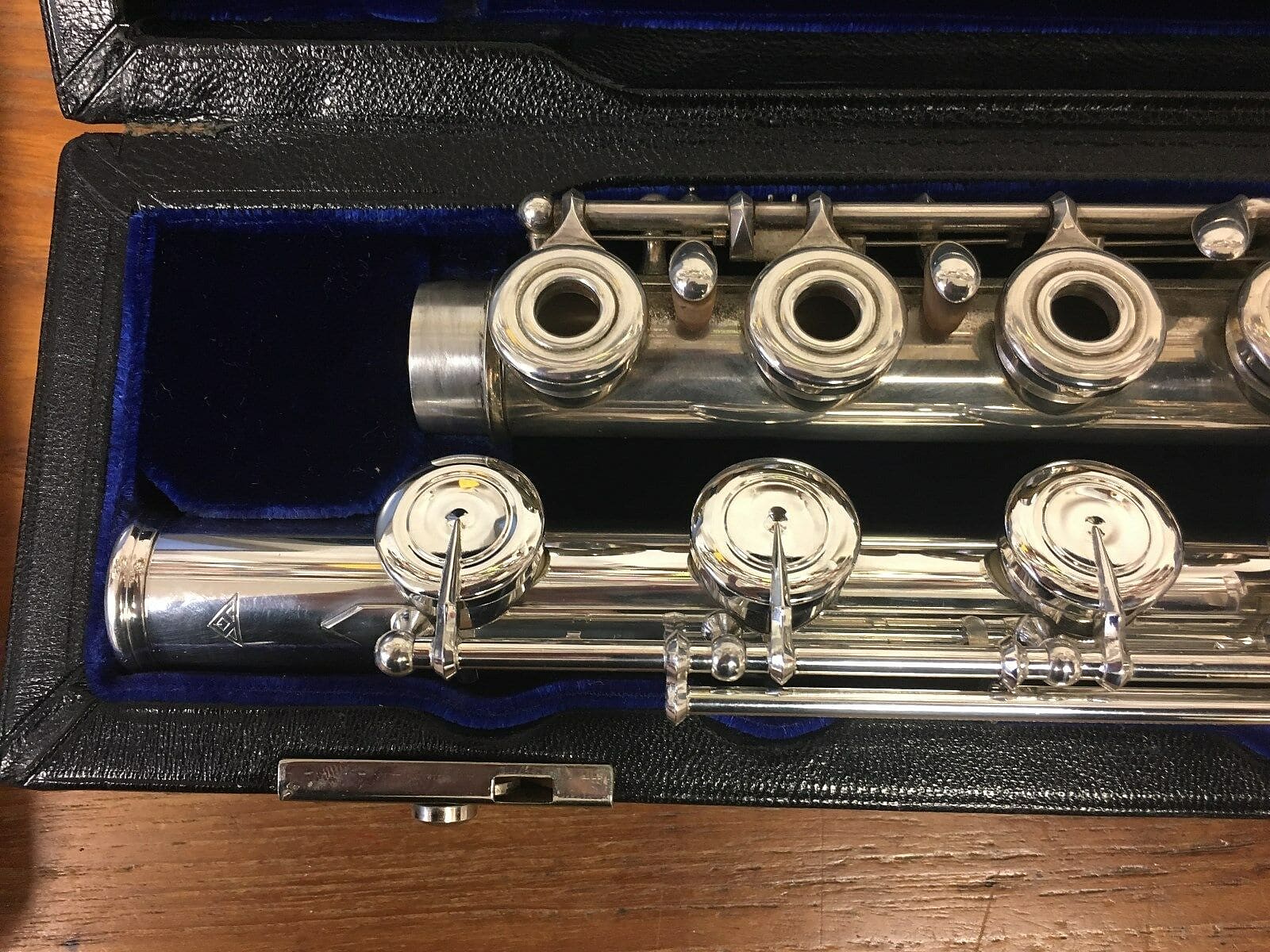
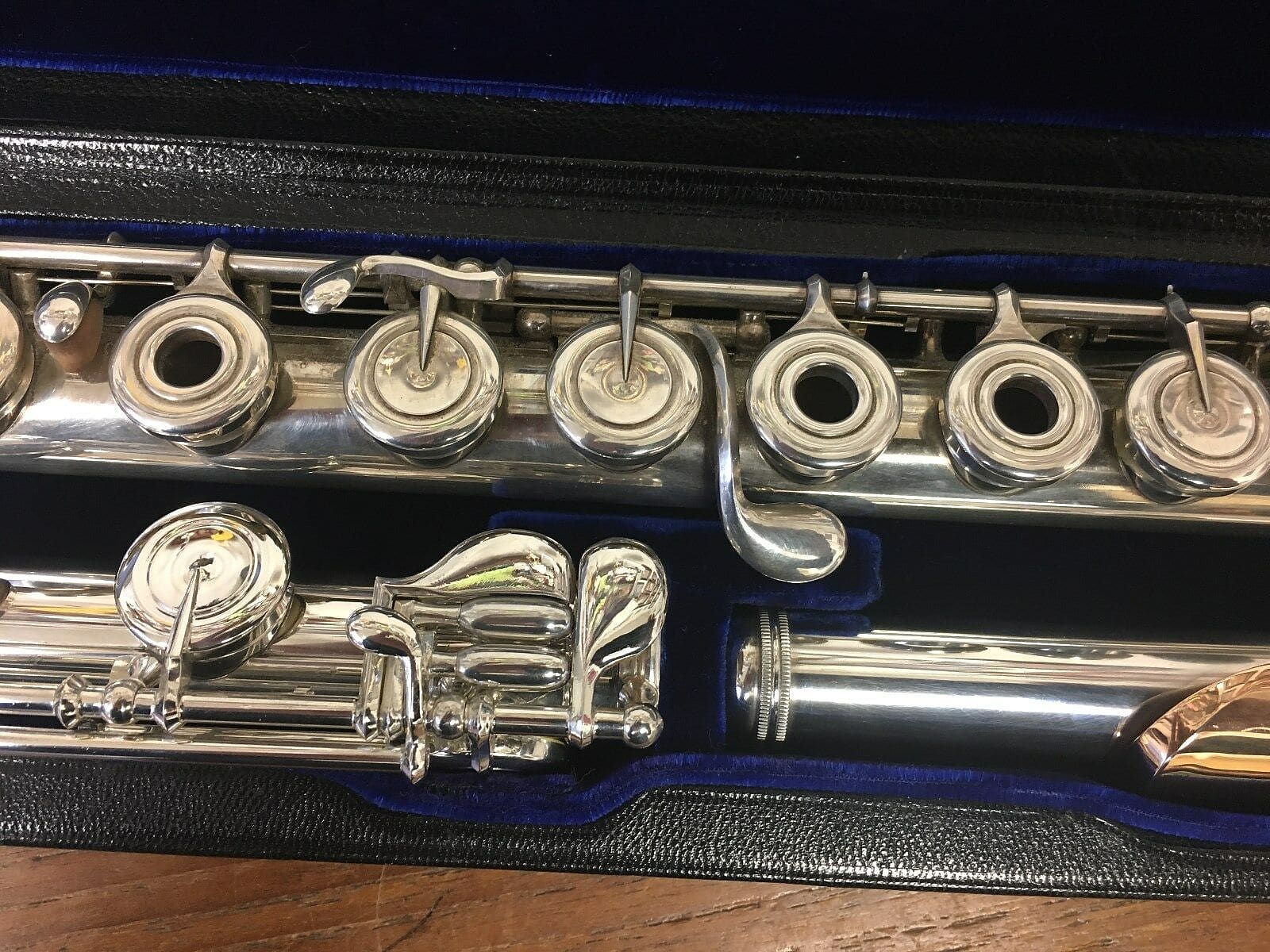
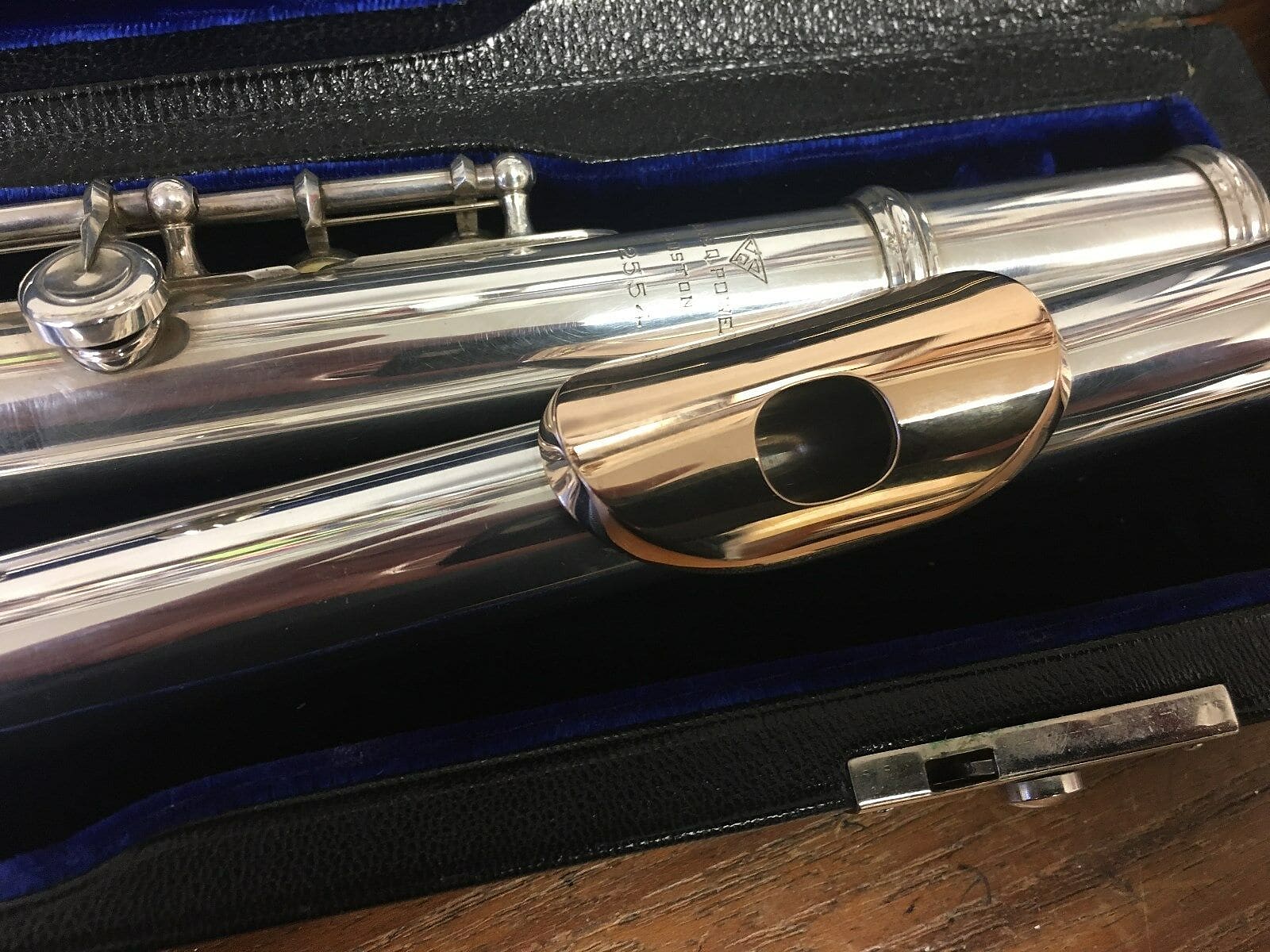

.jpg)
.jpg)
.jpg)
.jpg)
.jpg)

.jpg)
.jpg)


.jpg)
.jpg)
.jpg)
.jpg)



